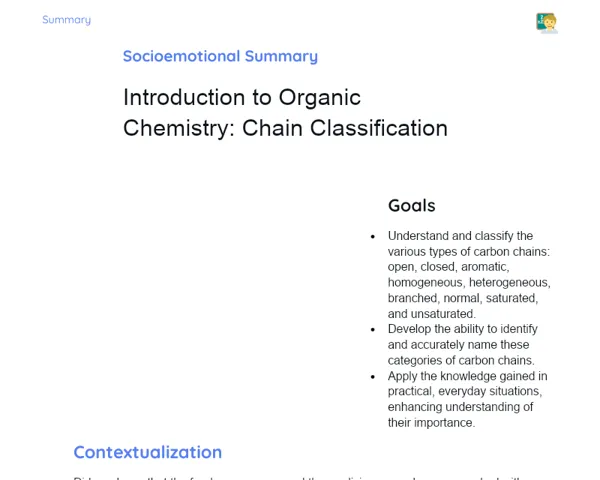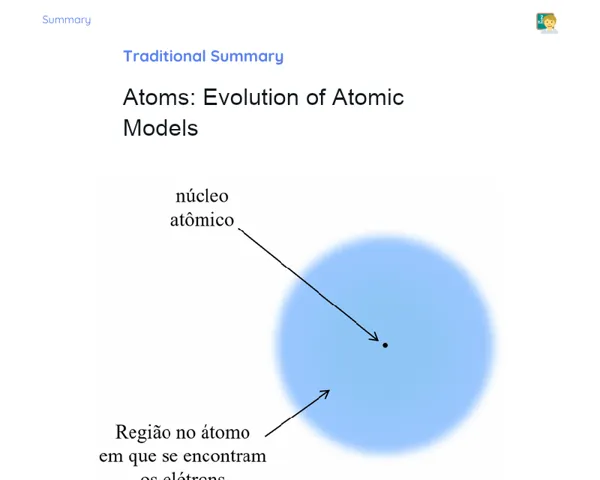Objectives
1. Help students learn to calculate the molarity of a chemical solution using the formula M = n/V, where n denotes the number of moles of the solute and V is the volume of the solution in liters.
2. Build skills in manipulating formulas and units of measurement to tackle practical problems related to the preparation and dilution of solutions with varying concentrations.
Contextualization
Molarity is a crucial measure in chemistry that quantifies the concentration of a solute in a solution. It's widely applied in labs, the pharmaceutical sector, and even in our kitchens! Did you know that cooks sometimes use molarity to make solutions for preserving food or to fine-tune flavors in their dishes? Mastering molarity calculations not only gears you up for scientific experiments but also equips you with skills to understand and explore the world around you in an entirely new light.
Important Topics
Molarity Formula
The molarity formula, represented as M = n/V, is crucial for calculating the molar concentration of a solution. Here, 'M' stands for molarity, 'n' is the number of moles of the solute, and 'V' is the volume of the solution in liters. This formula enables both chemists and students to ascertain how concentrated a solute is, which is essential for accurate experiments and real-world applications.
-
Molarity (M) is a measurement of the concentration of a solute in a solution, which is essential for preparing chemical reactions.
-
The number of moles (n) of the solute is derived by dividing the mass of the solute by its molar mass, which differs for each substance.
-
The volume (V) in the formula is always in liters to maintain consistency in units and ensure accuracy in calculations.
Practical Application of Molarity
Molarity is not merely a theoretical concept but a vital tool across various domains like pharmacy, medicine, and cooking. For instance, pharmacists rely on molarity to create medication solutions that are safe and effective for patients. In culinary practices, molarity aids in formulating precise preservatives for food.
-
In the pharmaceutical field, molarity guarantees accurate dosages of medications are delivered appropriately.
-
In research labs, molarity is fundamental for preparing standard solutions that form the basis of experiments.
-
In cooking, accuracy in the molarity of solutions can significantly influence taste and the preservation of ingredients.
Dilution and Mixing
Grasping molarity is essential for performing dilutions and mixing solutions correctly. Dilution involves adding more solvent to a solution, thereby reducing its molarity without altering the total number of solute moles. This is commonly done in labs to adjust solution concentrations for specific experiments.
-
Dilution is a standard technique to modify the concentration of solutions while keeping the number of moles of solute intact.
-
Mixing solutions with differing molarities to attain a new concentration requires accurate molarity calculations.
-
The dexterity to dilute and mix solutions accurately is crucial for anyone working in chemistry or related fields.
Key Terms
-
Molarity: A measure of the concentration of a solute in a solution, expressed in moles per liter.
-
Mole: The base unit in the International System of Units for the amount of substance. One mole is approximately 6.022 x 10^23 particles of a substance.
-
Volume: The space occupied by a liquid, typically measured in liters within the context of chemical solutions.
For Reflection
-
How can precision in calculating molarity influence the outcomes of a scientific experiment?
-
Why is it necessary to convert all units to the International System when determining molarity?
-
In what ways can an understanding of molarity benefit you in daily life, beyond an academic perspective?
Important Conclusions
-
In this lesson, we dived into the concept of molarity, a fundamental measure of solute concentration in a solution, which holds significance in both educational and professional settings.
-
We learnt how to compute molarity using the formula M = n/V and examined the importance of understanding measurement units for ensuring accuracy in calculations.
-
We recognized the practical implications of molarity in diverse areas, from pharmacy—where it is crucial for preparing medications—to cooking and even water treatment.
To Exercise Knowledge
Choose any solution to prepare and calculate its molarity. Following this, dilute the solution to achieve a desired new concentration. Document all the steps and calculations you undertook, reflecting on the importance and precision of each step.
Challenge
Chef Chemist Challenge! 🍳 Get creative and prepare a food preservative using molarity. Calculate the required molarity to effectively preserve fresh fruits and put it into practice. Share your experiences and results with the class!
Study Tips
-
Consistently revise the formulas and concepts discussed in class; practice with various examples to solidify your understanding and application skills.
-
Leverage online resources, such as lab simulators and molarity calculators, for virtual experiments that enhance your learning.
-
Form study groups to collaborate, discuss, and resolve problems together, sharing queries and strategies for a richer comprehension.


